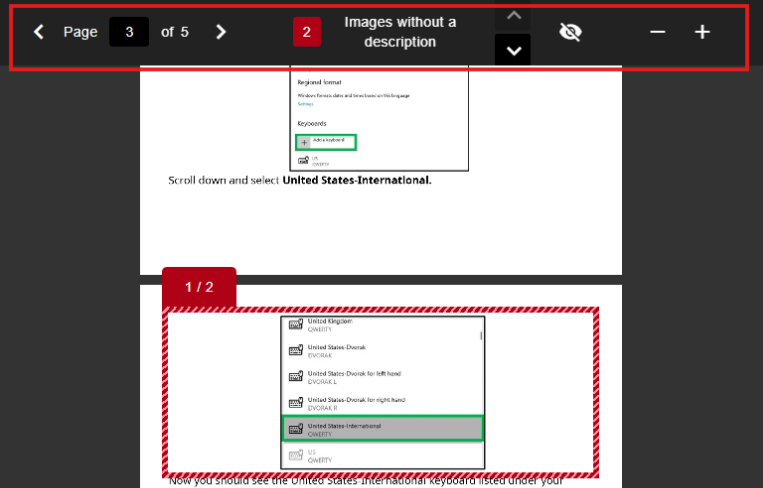Ally’s course accessibility report provides the optimal place to start remediating your course content. It provides an accessibility summary and overview at the course level and includes Overview and Content tabs so that you can get the big picture as well as specific details about the accessibility of your digital course content.
The Overview tab shows the accessibility score for the course, a graph of the course content grouped by content type, and a list of all issues identified in the course
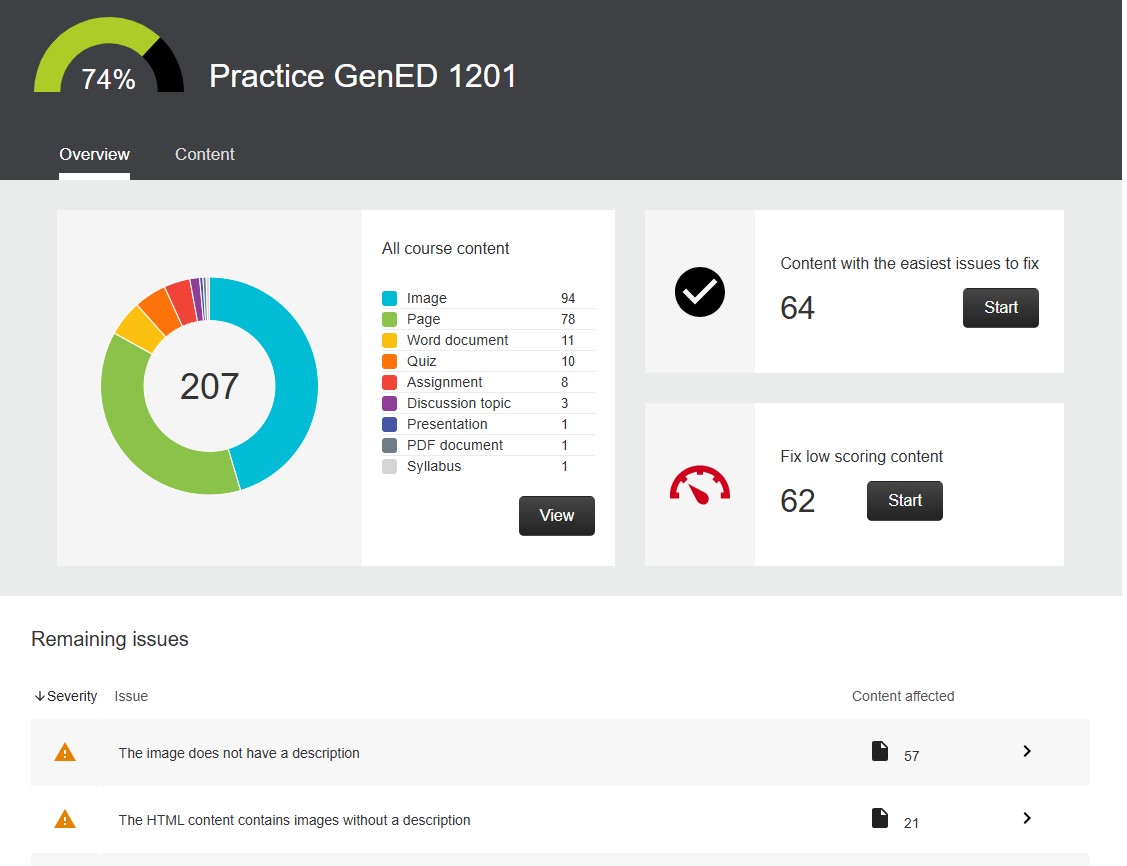
Accessibility score
The report includes an accessibility score for the entire course.
Scores range from Low to Perfect. The higher the score the fewer the issues.
- Image

Low (0-33%): Needs help! There are severe accessibility issues.
- Image

Medium (34-66%): A little better. The file is somewhat accessible and needs improvement.
- Image

High (67-99%): Almost there. The file is accessible, but more improvements are possible.
- Image

Perfect (100%): Perfect! Ally didn't identify any accessibility issues, but further improvements may still be possible.
All course content
This chart displays all the content in your course, grouped by content type. Select Start to go to the Content tab and start fixing issues.
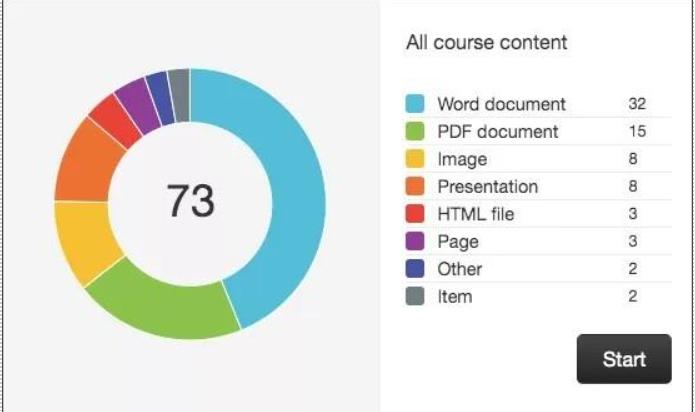
Currently, Ally checks and reports on course content in these formats:
- Pages
- Announcements
- Assignment Instructions
- Discussion Board Instructions
- Quiz Instructions
It also checks and reports on the following file types:
- PDF files
- Microsoft Word files
- Microsoft PowerPoint files
- OpenOffice/LibreOffice files
- Uploaded HTML files
- Image files (JPG, JPEG, GIF, PNG, BMP, TIFF)
- YouTube videos embedded using the RCE
Quick start options
The course report provides two quick start options for you to choose from.
- Content with the easiest issues to fix will take you to a list of your content with issues that are quick or simple to fix.
Fix low scoring content will take you to a list of your content that has a
Image
Low (0-33%) accessibility score.
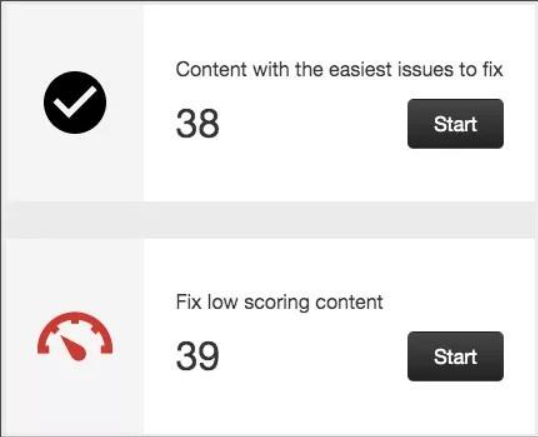
Remaining issues
This portion of the report lists all the content that still needs remediation, in order of severity and number of content items affected. Ally determines the severity of an issue by looking at the number of students impacted, how often the issue occurs, and the accessibility score.
- Image

Severe. These issues are the greatest risk to accessibility and require the most attention.
- Image

Major. These issues impact accessibility, and while not severe, require attention.
- Image

Minor. These issues should be considered for a better accessibility score.
Selecting an issue will open a list of all the content that has that issue. Select the content item to open the feedback panel to fix the issue.
The Content tab shows you each content item along with how many issues it has and its own accessibility score.
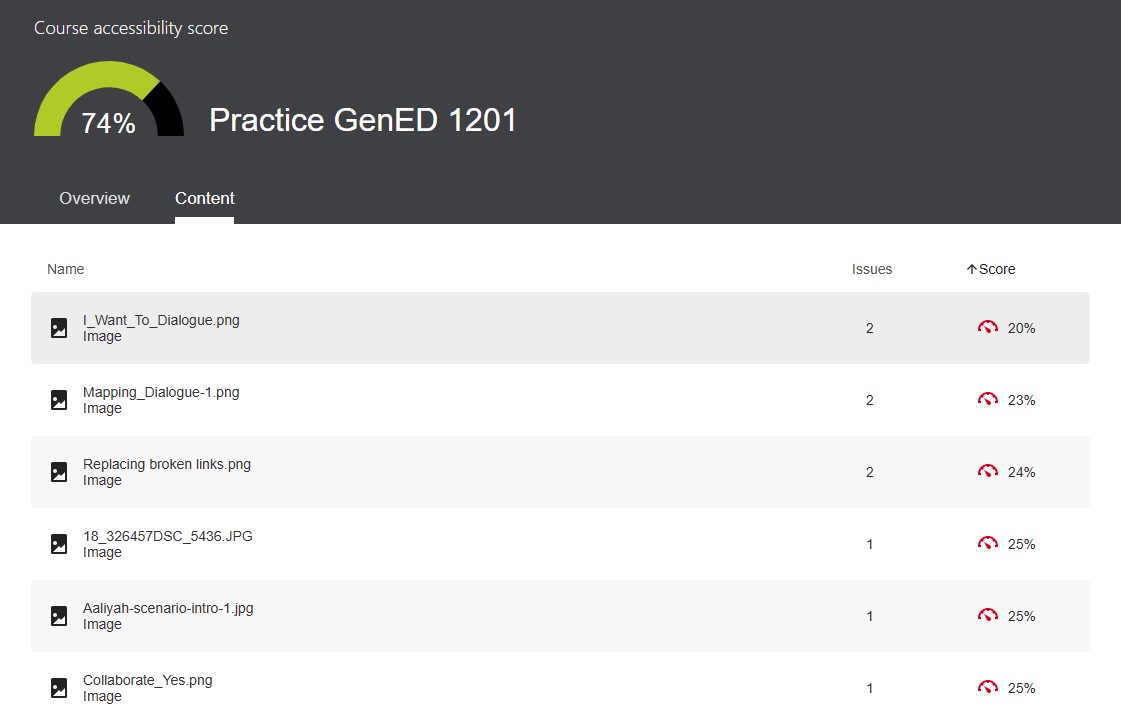
Your content can be sorted by Name, number of Issues, and accessibility Score by clicking on the respective column header. Clicking on the accessibility score indicator will open the feedback panel, where you can begin to address that piece of content’s issues.
Feedback Panel
Anywhere you see an accessibility score indicator in your course, you can click on it to open Ally’s feedback panel. The feedback panel shows you a preview of the document’s content as well as detailed feedback and support to help you fix your accessibility issues.
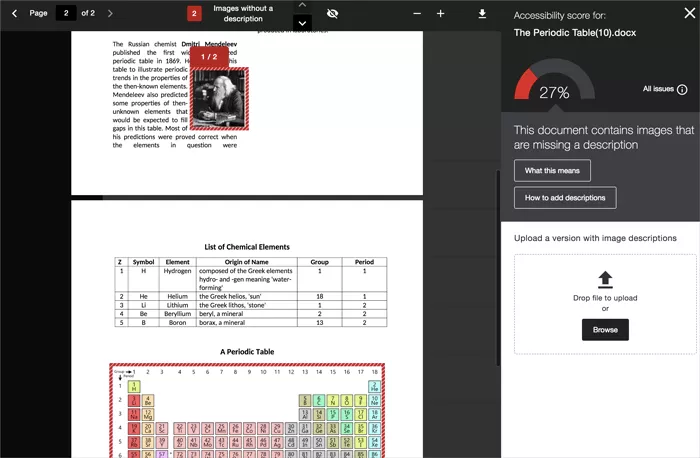
For accessible files, Ally tells you what you did correctly. For files with Low to High scores, Ally shows you the issues and gives a step-by-step guide on how to fix them. The feedback panel will open on the most critical issue by default. The right side of the feedback panel will show you all the details of the issue and how to remediate it.
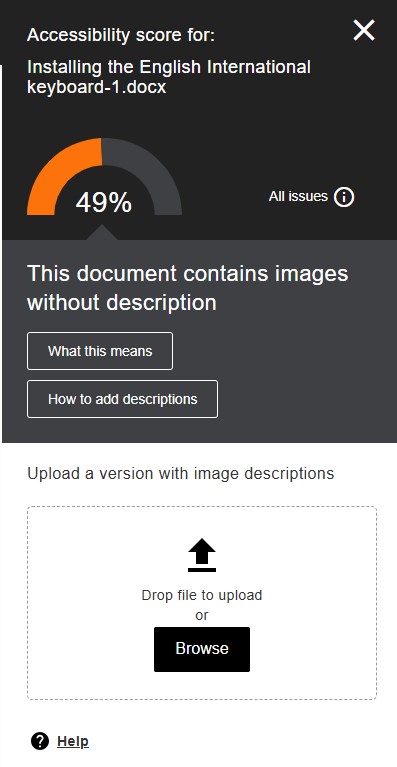
Accessibility score: The overall score for the entire file. This will update as you apply your fixes.
What this means: Clicking this provides you with a description for the specific issue selected.
How to...: Ally organizes its instructions for remediation as a decision tree, so all you need to do is read the directions and respond to the prompts. These instructions change depending on the file and the accessibility issues found. For example, with a PDF you may see instructions on how to make the PDF tagged. Select How to Make a PDF Tagged.
Upload: Upload updated files to replace the existing one.
All issues: Select All issues to see every issue in the file. This view shows you how much the score can improve by fixing each issue. Find the issue you want to start fixing and select Fix.
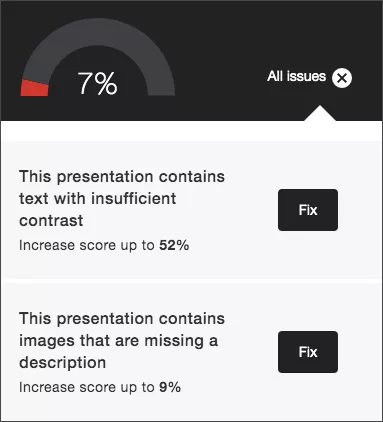
Highlights
In the file preview portion of the feedback panel, Ally highlights where specific accessibility issues can be found in the document. Highlights show every occurrence of one issue type at a time. For example, if your images are missing alternative descriptions, the highlights show you every place where this specific issue occurs. If your document also has poor text contrast, select that issue in the feedback panel to see the occurrences of that issue highlighted.
Highlights are provided for these issues:
- Images without an appropriate alternative description
- Text fragments with insufficient contrast
- Tables without table headers
All other accessibility issues are not highlighted in the preview.
Missing text description:
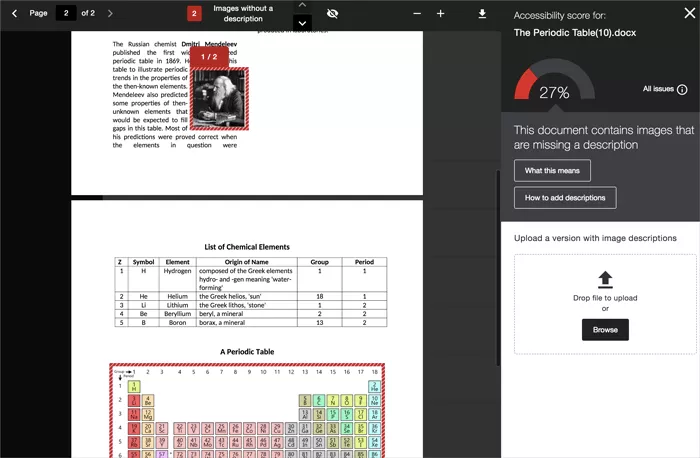
Text contrast:

Scanned PDF:
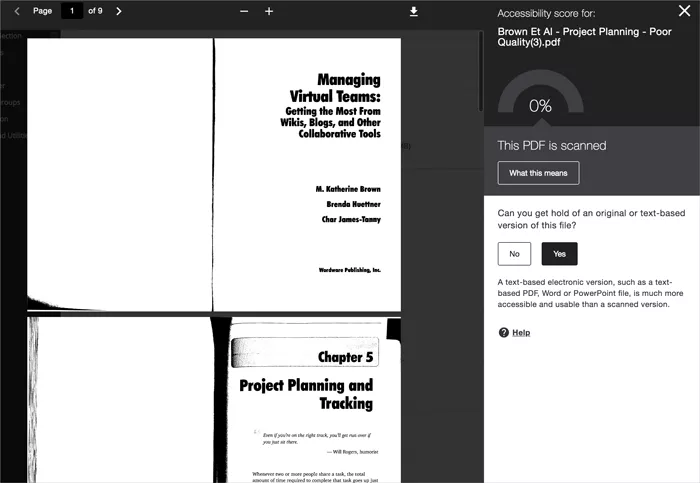
Preview tools
Use the tools above the preview to explore the issues in your document.
- Move through the document preview page by page.
- See how many times a specific issue appears in the document.
- Jump between the issue highlights.
- Hide or show the highlights.
- Zoom the preview content in or out.
- Download the original file.
